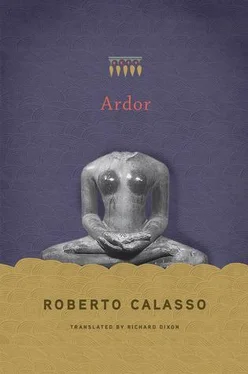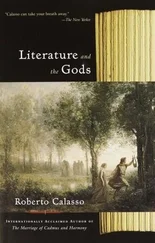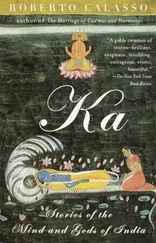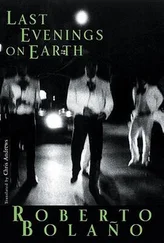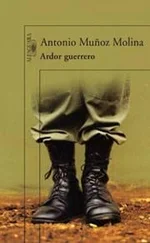When Renou had the chance, at Pune, to witness a Vedic sacrifice of the simplest kind, that of the Full Moon and the New Moon, he was struck by the activity of the adhvaryu : “One was able to gauge the overwhelming role of the manual officiant, the adhvaryu , on whom almost everything depends, gestures and words, despite the assistance he receives from two acolytes.” While the hotṛ , the chanter, “appeared at the important moments, dominating everything with his tall stature and his vibrant voice,” the adhvaryu provided the background to that “ample drapery of verses” with his “short, disjointed formulas,” similar to the way of arguing in the Brāhmaṇas — always starting, being interrupted, being forced to change direction, weaving the fabric of the work by resuming it at different points.
The school of the White Yajur Veda is different from that of the Black Yajur Veda, above all because there is a clear-cut separation between the mantras —or verse “formulas,” often taken from the Ṛgveda —and the commentaries on the ritual, which are in prose. We do not know and cannot guess what reasons lay behind this variance. But we can observe one result: the birth of prose , in the sense of a lengthy exposition, with no metric form, on a single subject: in this case the whole of the sacrificial rites. Until then, nothing of the kind had been seen in that form: of obstinate, meticulous, obsessive, relentless inquiry. Even if the Brāhmaṇas would one day become misused, spurned and reviled as a literary style, something of these origins would continue to energize prose, especially where that humble and practical form has revealed its intent to pervade every corner of everything, as in Proust. À la recherche du temps perdu , in fact, can be read as an immense Brāhmaṇa, devoted to expounding and illuminating the fabric of time within that long ritual (a sattra ) that was the life of its author.
The “flavor,” rasa , of the Śatapatha Brāhmaṇa , an unmistakable flavor that cannot be reduced to that of a metaphysical or a liturgical commentary, lies first of all in the uninterrupted sensation of thinking the gesture at the very moment when the gesture is performed, without ever abandoning or forgetting it, as if the spark of thought might be released only at that moment in which an individual being moves his body in obedience to a significant course. It would be hard to find other cases where the life of body and mind have coexisted in such intimacy, refusing to detach themselves for even a single instant.
* * *
The Brāhmaṇas do not offer one cosmogony, like the Bible or Hesiod or many tribal epic poems, but clusters of cosmogonies, juxtaposed, superimposed, and contrasted. This produces a feeling of bewilderment — and in the end of indifference. If the versions are so many and conflicting, might they not be regarded as lucubrations of the ritualists? The multiplicity of alternatives tends to lessen their meaning. Even Malamoud, who is used to treating texts with supreme care and discretion, in the end shows signs of impatience when referring to these “cosmogonies replicated, repeated, piling up, from one text to another, or within one and the same hymn, pushing back, overwhelming, penetrating, breaking up, like crashing waves”—a vivid and accurate description of these stories of “false beginnings or relative beginnings” that seem to give no hope of a fundamental solidity when describing origins, which are always veiled. And Malamoud quotes here a verse from the Ṛgveda : “You will not know he who created these worlds: something shields you.”
Yet cosmogonies follow and overlap one another. But there is always the suspicion that they are “secondary creations.” The gods are not there at the beginning, but almost at the end. Before them appeared the “mind-born children,” mānasāḥ putrāḥ , of Prajāpati — successful attempts after many failures. And before them was Prajāpati himself, the Progenitor, though he — once again — was not a beginning. For Prajāpati to be created, the Saptarṣis had to meet and join forces, because they in turn felt unable to exist alone. A tangle of dark and tortuous stories, behind which always looms the outline of something else, perhaps only the “indistinct wave” to which the Ṛgveda refers.
* * *
On reaching the end of the tenth kāṇḍa of the Śatapatha Brāhmaṇa , after five kāṇḍas devoted to describing how the fire altar is to be built, covering an equivalent of 678 pages in Eggeling’s translation, and after having negotiated a frenzy of additions and multiplications concerning the number of bricks to be used for building it and the way in which they are to be arranged, as well as various errors of calculation that have to be avoided during these operations, we come across three passages that are surprising for different reasons. After a final, breathtaking excursus on arka , a word in which a secret teaching is each time encapsulated, we immediately pass to a page that opens like a sudden clearing within the forest of numbers. It begins with these words: “Let him meditate on true brahman ,” which is linked, a little later, to a passage beginning: “Let him meditate on ātman. ” And it is followed by a few lines that already have the self-absorbed, final tone of the first Upaniṣads and end with the words: “Thus spoke Śāṇḍilya and so it is.” Śāṇḍilya, according to tradition, is the author of kāṇḍas 6–10 of the Śatapatha Brāhmaṇa and these words of his are called the Śāṇḍilyavidyā , “the doctrine of Śāṇḍilya,” as if the essence of his thought is revealed there. And it is here, in fact, that we find the precise meeting point, if ever this were needed, between the Brāhmaṇas and the subsequent and consequent Upaniṣads. This is the point where ātman is described as being like a “grain of millet” and like “this golden Puruṣa in the heart,” after the five previous kāṇḍas had culminated in the description of how a minuscule human figure, the golden Puruṣa, was to be placed into the fire altar, whereas that same Puruṣa, that Person, is now to be found inside the heart and is revealed as being “greater than the sky, greater than space, greater than the earth, greater than all beings.” This is the Vedic catapult that suddenly takes us from the smallest to the immeasurable and reveals where to find something that anyone, every meditator, can call “my Self.” Here is a doctrine of enormous force, set out in a few clear, calm words, which will then extend throughout the Upaniṣads, for which it is the supreme teaching. “Thus spoke Śāṇḍilya and so it is.” For Nietzsche’s Zarathustra, the final clause—“and so it is”—would be missing. Nor could it have been otherwise.
* * *
An old problem for Indologists is the relationship between the Brāhmaṇas and the Upaniṣads. Agreement? Disagreement? Conflict? For guidance, there is a simple test: if we read the Śatapatha Brāhmaṇa as it is set out — and therefore followed immediately by the Bṛhadāraṇyaka Upaniṣad —we cannot avoid the impression of a perfect continuity of ideas. What changes is the stylistic register. After the incessant, detailed, stubborn exposition of the Brāhmaṇa, similar to the obsessive whirring voice of the adhvaryu , we now plunge into a dazzling incipit , which acts like a megavoltage discharge built up from the accumulation of nimbus clouds over the previous two thousand or so pages. It is as though, after a protracted compression and concentration of energies, we witness their release into bright fragments that instantaneously connect, without even a pause for verbs, as the Sanskrit language allows: “Dawn the head of the sacrificial horse, Sun its eye, Wind its breath, the open mouth Fire-of-all-men, the Year the Self,” (where Dawn, Sun, Wind, and Fire are Uṣas, Sūrya, Vāyu, and Agni, all gods of the Vedic pantheon).
Читать дальше
